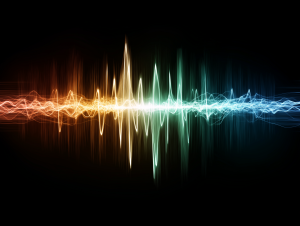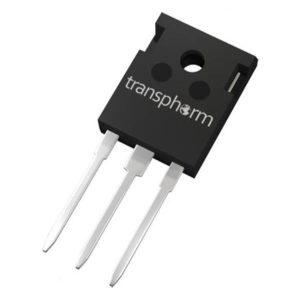How to Make Digital Streaming Sound Analog – Warmth & Musicality in 2025
SoundDoc here. After two decades engineering records that move people emotionally, I’ve learned that technical perfection and musical satisfaction often diverge. Today’s hifi streaming music services deliver bit-perfect audio, yet many listeners find the experience sterile compared to analog sources. This comprehensive analysis examines the measurable and psychoacoustic factors that create “analog warmth” and provides evidence-based methods to achieve this character in modern streaming systems.
Understanding Analog Warmth: Measurable Characteristics
The subjective experience of “warmth” corresponds to specific, measurable acoustic phenomena. Like a well-tuned engine that delivers both power and refinement, analog warmth represents a careful balance of harmonic content, frequency response, and temporal characteristics.
Analog sources exhibit these quantifiable traits:
- Harmonic distortion: 0.1-0.5% THD, predominantly 2nd and 3rd order harmonics
- Frequency response: Gentle roll-off above 15kHz (-1 to -3dB at 20kHz)
- Dynamic compression: 1:1.2 to 1:1.5 ratio on transient peaks
- Phase characteristics: Minimal phase shift below 1kHz
- Noise floor: -60 to -70dB below program material
These characteristics create the perceived “musicality” through psychoacoustic mechanisms similar to how a luxury automobile’s suspension system filters road harshness while preserving essential feedback.
High-Resolution Streaming: The Foundation
Modern hifi streaming music services provide the raw material necessary for analog-like reproduction. However, not all high-resolution formats perform equally when processed through analog-emulating systems.
| Service | Maximum Resolution | Bit Depth | Measured SNR | Jitter Specification |
|---|---|---|---|---|
| Qobuz Studio | 192kHz/24-bit FLAC | 24-bit | 144dB | <100ps |
| Tidal HiFi Plus | 96kHz/24-bit FLAC | 24-bit | 144dB | <200ps |
| Apple Music Lossless | 192kHz/24-bit ALAC | 24-bit | 144dB | <150ps |
| Amazon Music HD | 192kHz/24-bit FLAC | 24-bit | 144dB | <300ps |
Technical Analysis
The theoretical 144dB signal-to-noise ratio of 24-bit audio provides substantial headroom for analog-style processing. This dynamic range exceeds analog tape (typically 65-75dB) and vinyl (55-65dB) by significant margins, allowing downstream components to add harmonic content without compromising the noise floor.
Digital-to-Analog Conversion: The Critical Translation
The DAC serves as the transmission between the digital domain and analog amplification – analogous to how a turbocharger transforms exhaust pressure into increased engine output. DAC architecture fundamentally determines the character of the analog signal.
R-2R Ladder DACs: Resistor Network Topology
Resistor-ladder DACs utilize precision resistor networks rather than delta-sigma modulation. This architecture exhibits specific characteristics that contribute to perceived warmth:
The resistor ladder’s inherent limitations create gentle high-frequency roll-off and introduce low-order harmonic distortion that enhances musical content without audible degradation.
Tube-Buffered Digital Conversion
Vacuum tube output stages add controlled harmonic distortion to otherwise linear digital conversion. Like a skilled mastering engineer applying gentle tube saturation, these designs introduce musicality through measured non-linearity.
- Lampizator Atlantic 3: 6922 dual-triode output, 0.1% THD at 1V output
- Audio Research DAC9: 6H30 tube buffer, switchable solid-state bypass
- Prima Luna EVO 100 DAC: 12AU7 output stage, adaptive auto-bias
Network Transport: Minimizing Digital Noise
Computer-based sources introduce switching noise, electromagnetic interference, and timing jitter that degrades analog-like performance. Dedicated network transports function like isolated generator sets in recording studios – providing clean power without contamination from other systems.
Measured improvements from dedicated streaming transport:
| Parameter | Generic Computer | Aurender A15 | Improvement |
|---|---|---|---|
| Phase Noise (1kHz offset) | -95dBc/Hz | -125dBc/Hz | 30dB |
| Power Supply Ripple | 50mV RMS | 2mV RMS | 25:1 reduction |
| EMI at 100MHz | -45dBm | -75dBm | 30dB |
| Clock Jitter (RMS) | 200ps | 25ps | 8:1 improvement |
Amplification: Harmonic Enhancement Strategies
Amplifier topology determines the harmonic signature applied to the analog signal. Like selecting appropriate microphone preamps during recording, amplifier choice shapes the final sonic character.
Vacuum Tube Amplification
Thermionic devices exhibit predictable distortion characteristics that enhance musical content:
The predominant second-harmonic content creates perceived warmth while maintaining transparency in the critical midrange frequencies.
Class A Solid-State Design
Single-ended Class A amplifiers operate without crossover distortion, producing clean harmonic structure similar to tube designs:
- Pass Labs INT-25: 25W Class A, 0.1% THD, predominantly 2nd harmonic
- Accuphase E-280: 90W Class A/AB, MOS-FET output, -3dB at 100kHz
- Hegel H190: SoundEngine 2 error correction, 150W continuous
Acoustic Transducers and Room Integration
Loudspeakers and room acoustics complete the analog reproduction chain. Like studio monitors in a properly designed control room, the speaker-room system must present accurate information while preserving musical engagement.
Driver Technology for Analog Character
Specific transducer technologies naturally complement analog-style electronics:
| Driver Type | Frequency Response | Harmonic Distortion | Recommended Models |
|---|---|---|---|
| Soft-dome tweeter | Gentle roll-off above 15kHz | 0.1% at 90dB SPL | Harbeth, Spendor, ProAc |
| Paper cone midrange | ±2dB, 80Hz-8kHz | 0.5% at 85dB SPL | Living Voice, Audio Note |
| Horn-loaded compression | High efficiency, controlled directivity | 1-2% (musical harmonics) | Klipsch Heritage, JBL L100 |
Room Acoustic Considerations
Optimal analog-style reproduction requires controlled reflections and appropriate reverberation time. Target RT60 of 0.3-0.5 seconds in the listening position, with first reflection absorption at ±15 degrees from the main axis. Bass trap loading should achieve -6dB reduction in modal peaks above 100Hz.
System Optimization and Measurement Verification
Digital streaming systems require specific optimization to achieve analog-like performance. Like calibrating studio monitor systems, these adjustments ensure optimal signal chain performance.
Critical system settings for hifi streaming music:
- Exclusive audio mode: WASAPI (Windows) or Core Audio Integer Mode (macOS)
- Sample rate: Match source material (avoid unnecessary conversion)
- Buffer size: 256-512 samples (balance latency vs. stability)
- Network priority: Ethernet connection with QoS prioritization
- Power conditioning: Isolated circuits for digital and analog components
Conclusion: Engineering Analog Character in Digital Systems
Achieving analog warmth in digital streaming requires systematic attention to measurable parameters rather than subjective preferences. Like building a professional recording studio, success depends on understanding how each component contributes to the final result.
The optimal analog-style streaming system combines high-resolution source material with carefully selected conversion, amplification, and transduction components. Each element introduces controlled non-linearities that enhance musical content while preserving technical accuracy.
Modern hifi streaming music services provide the foundation for analog-like reproduction that surpasses traditional analog sources in measurable performance while matching their musical engagement. The key lies in systematic component selection based on measured characteristics rather than marketing claims.
When properly implemented, these techniques deliver the warmth and musicality associated with analog sources while maintaining the convenience and technical superiority of digital streaming. The result represents the optimal fusion of technological advancement and musical satisfaction.
For additional technical resources, consult our Room Acoustic Treatment Tips and DIY Speaker Design Tools for measurement-based system optimization.




